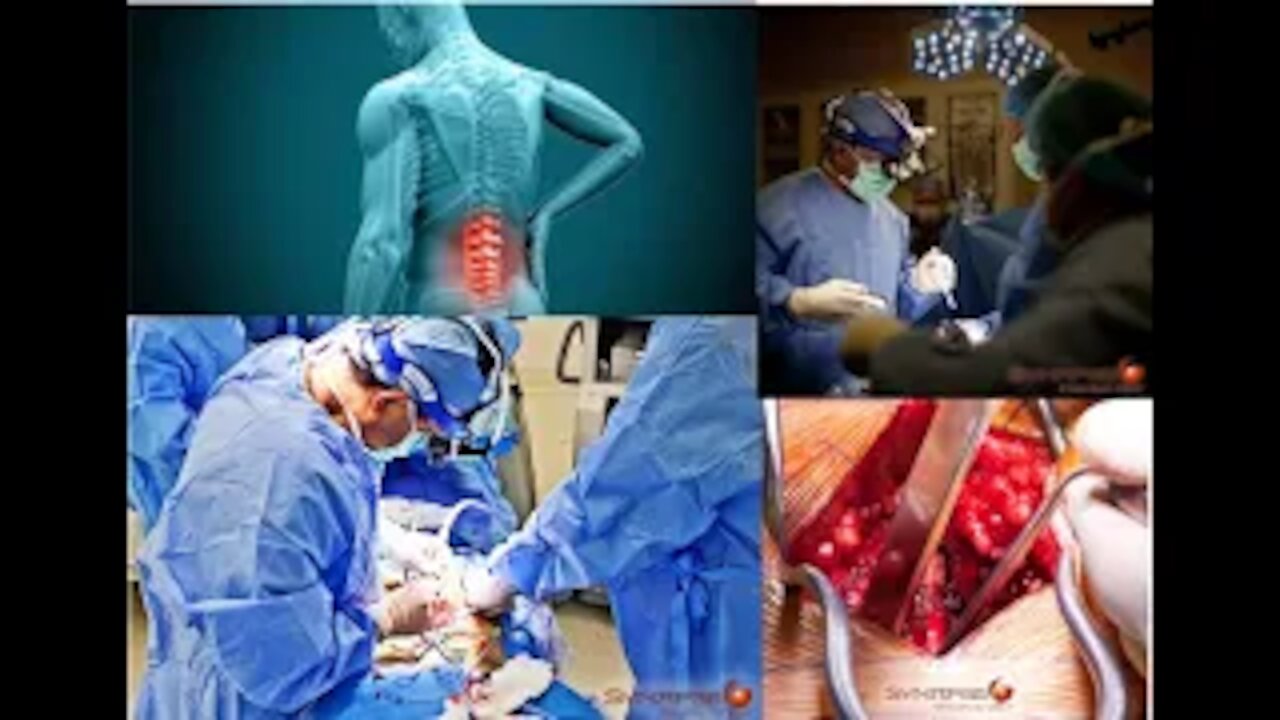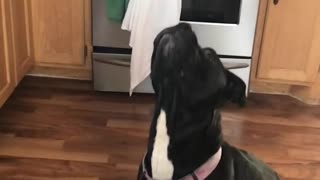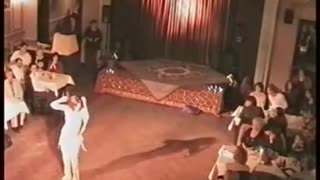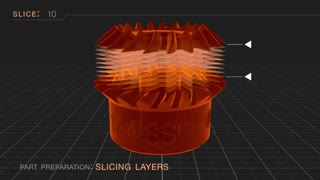Premium Only Content

Lumbar Fusion to Treat 2 Ruptured Discs
Meet Thelma.
Thelma suffered from two ruptured discs. Synapse Orthopedic Group's Edwin Haronian MD performed a lumbar fusion surgery on her. Post-op, she has improved greatly she is finally able to feel her toes again and walk comfortably. She now has her life back and feels blessed that Doctor Haronian took great care of her.
Call us to schedule an appointment: (818) 788-2400
Locations in Pomona, Sherman Oaks, and Los Angeles
One of the most common procedures performed in spine surgery is lumbar fusion. Many disease processes affect the spine as a result of the motion that occurs between each bony segment. In the normal spine, each segment has 6 different motion directions (6 degrees of motion) and when there is dysfunction, pain is produces which leads to dysfunction. The primary structure allowing this motion is the inter vertebral disc. The bio-mechanical structure of the disc is so complicated that current medical technology can not duplicate the disc and it can not be replaced by any synthetic material. For this reason, the most reliable replacement is placement of bone in place of the disc which fuses the segments and eliminates the motion at that segment which will ultimately resolve the pain. The downfall of fusion is loss of motion in that segment (which may be very small for each fused level) and increased stress in the adjacent levels. Common diagnosis that fusion surgery is used for is internal disc derangement, discogenic pain, spondylolysis, spondylolisthesis, post-laminectomy spondylolisthesis, spinal deformity like scoliosis and kyphosis, and others.
Common to all fusion surgeries is the use of bone graft which can be obtained from several different sources. The discussion of bone grafting is an important one since controversy exists regarding this issue which includes the source of the graft as well as the techniques for its use.. Even though many new advances have been made in recent years, harvesting the patients own bone from areas of unused bone is still the best accepted technique. The most common area that bone is taken from is the pelvis. Since the pelvis has areas of bone that are unused it is a good source for bone graft. Another area is the Fibula (little shin bone).
The use of patients own (autologus) bone graft results in the highest rates of fusion. The downfall of autologus bone grafting is donor site morbidity, or in other words, the problems that arise in the area that the bone graft was taken from. The harvesting process creates another and separate incision with its own associated risks. In addition, there is pain at that site that must be controlled after the operation. The other option for bone grafting is the use of cadaveric bone that has been processed prior to use in surgical procedures. In some cases the use of cadaveric bone leads to slightly lower fusion rates but this technique avoids the possible complications from bone harvesting. In recent years, bone processing techniques have been developed that concentrate the chemicals stimulating bone healing and fusion. These chemicals are called BMP (bone Morphogenic Protein) and are found in high concentrations in preparations such as Grafton which are supplied by the American Red Cross. Other preparations by other companies are also available. The discussion of bone grafting is complicated and no perfect answer is yet available. This subject should be discussed thoroughly with your physician including risks, benefits, and alternatives of each choice.
Generally the best success rates of fusion occur with one level fusion. Most patients will not notice any decrease in motion since the other segments compensate for the loss of motion and most bending occur at the hip joints. Still, the fusion of 2 motion segments is very common with mostly good results. More uncommonly, 3 or even 4 levels must be fused but the expected results are lower than 1 or 2 level fusions. In cases of deformity even more segments may require fusion to achieve and maintain correct alignment. Surgical fusion of the bony segment could be approached from different sides of the spine. Again, there are risks and benefits to different approaches and your surgeon will advise you based on experience, judgment, and science to arrive at a suitable decision in each case. The spine can be approached from the front of the patient, the back, or a combined front and back procedure. Approaches from the back can further be divided into several different techniques. These include the Postero-lateral Fusion, and Posterior Lumbar Inter-body Fusion (PLIF).
For more information please visit our website at: http://www.synapsedoctor.com
You can also follow our social media pages at:
http://www.facebook.com/synapsedoctor
http://www.instagram.com/synapsedoctor
http://www.twitter.com/synapsedoctor
-
 1:54
1:54
Sparkle Dance Academy
4 years ago $0.02 earnedSpanish Fusion Class
212 -
 0:03
0:03
RubyLokiRed
4 years agoPeluche Treat
98 -
 0:35
0:35
World around us
4 years agoBearish treat
252 -
 1:29
1:29
Shadows Animals
4 years agochickens having a treat
60 -
 0:13
0:13
minyma
4 years agoCatching her treat
70 -
 5:07
5:07
Bellydancer Damkina
4 years agoDamkina perform a modern fusion with shamadan
85 -
 0:28
0:28
KKosk71
4 years agoLuna gets a treat
40 -
 17:55
17:55
Verdier400
4 years ago2019-2020 Ford Fusion Energi: Ride Around
24 -
 10:58
10:58
Wes Makes Stuff
4 years agoPowder Bed Fusion 3D Printing
268 -
 0:13
0:13
wyattx3
4 years agoBasset catching treat
2451